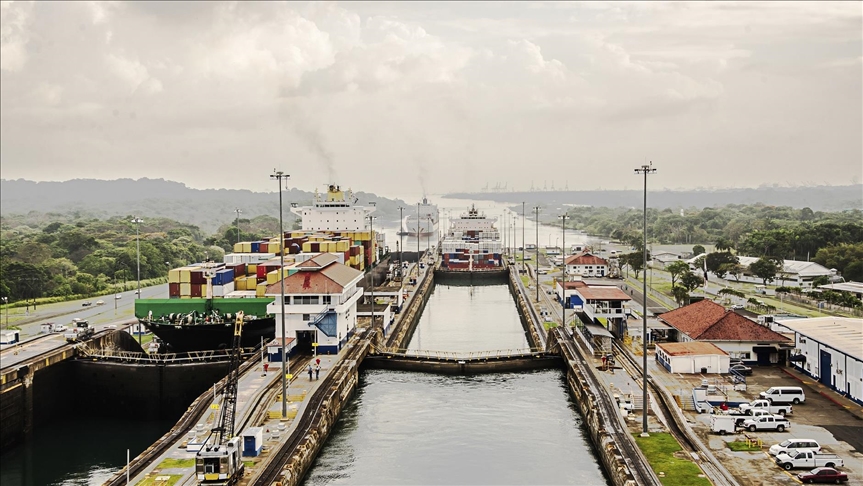Panama celebrates 107th anniversary of opening of canal
Man-made waterway connects Pacific, Atlantic oceans

BOGOTA, Colombia
Ricardo Anguizola woke up at 6 a.m. (1400GMT) Friday to the ringing of the phone.
He was told he would have to board the Hong Kong-flagged bulk carrier Hai Chang on the Atlantic Ocean side Panama Canal at 9 a.m. (1700GMT).
And just as he does from Monday to Saturday every week, he prepared to ply the waters of what is considered one of mankind’s greatest achievements.
Anguizola works as a pilot for the Panama Canal. His job is to take control of ships that transit the 80-kilometer (50-mile) maritime passage and navigate them through a series of tricky locks and waterways to get them to the ocean on the other side of the isthmus.
The US-built waterway that was excavated between 1882 and 1914, marks its 107th anniversary on Sunday.
“During these 107 years, the canal has shortened distances, improved trade, transportation and connectivity worldwide,” according to the Panama Canal Authority.
It connects the Atlantic and the Pacific oceans and shortens travel times and distances for international trade. However, construction of the ambitious project was not easy.
France was the first country that attempted to build it. It was initiated in 1882 by French diplomat Count Ferdinand de Lesseps, who had successfully built the Suez Canal.
De Lesseps estimated that the Panama project would take about 12 years to complete.
But it would turn out to be a daunting task.
“That plan had its serious flaws because Panama was not a desert. To build the Suez Canal he had to excavate dirt and sand. Here there were mountains, rocks and other challenging conditions,” Anguizola told Anadolu Agency.
De Lesseps encountered major obstacles in Panama including insects, extreme heat, smallpox, malaria, yellow fever, the harshness of the Chagres River and financial mismanagement and corruption, which is why funding was ultimately withdrawn from the project that proved to be one of the biggest financial scandals of the century.
A French court later found De Lesseps and his son, Charles, guilty of mismanagement and they were fined and sentenced to prison.
French painter Paul Gauguin worked as forced labor on the French attempt to build it. He worked on the construction site for two weeks, during which he contracted malaria and then left for Martinique.
Other personalities contributed to the construction.
In 1887, Gustave Eiffel, known for the world-famous Eiffel Tower, agreed to build the locks for the canal. Eiffel was also among those indicted for fraud and eventually sentenced to two years in prison.
Following the failure of the French construction company, which only completed 40% of the work, the US began building the canal in 1904 and finished a decade later on Aug. 15, 1914.
Although Anguizola is used to maneuvering Panamax ships through the canal’s waterways, navigating tankers that range in length between 200 and 250 meters (650 and 820 feet), is tricky.
“The distance between large ships and the lock walls can be as little as 60 centimeters,” he says. “This is an extreme sport at only 2 km (1 mile) per hour.”
Before the canal, ships had to sail for months around the tip of South America. It has grown into a major economic asset, guaranteeing connection to more than 1,920 ports in 170 countries.
The canal is open 24 hours a day, 365 days a year. To keep it in permanent operation, the canal has a staff of 9,500 employees.
Nearly 40 ships pass through the canal each day. On average, a ship takes between eight and 10 hours to get from one side to the next.
The first ship to cross the canal was the American vessel, Ancon, marking the official opening of the maritime passage.
Anguizola´s workday ended around 7.p.m. He left the ship, this time on the Pacific Ocean, and returned home to await the next day's call.






